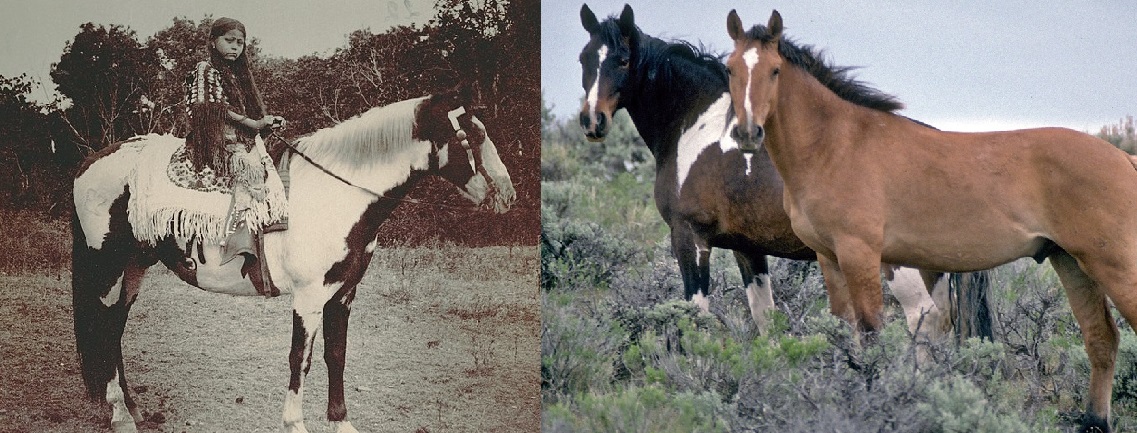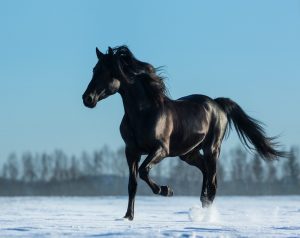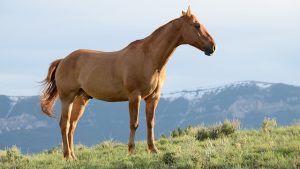The Morgan Horse
Gets its name from a stallion owned by Justin Morgan, the horse later took the name of its owner. All Morgans can be traced back to this stallion. The bloodlines that contributed to the original Morgan is thought to be Arabian and Welsh Cob, some Thorougbred and Friesian could also be in the mix. Straight limbs and compact muscular bodies with small head and high neck, are all characteristics of the breed. Morgans were favoured by the US Cavalry as mounts and as artillery horses and were renowned for their versatility and stamina. They are also economic in their required food intake – another reason for their popularity with the US Army – but will tend to obesity if over indulged. Typically they range 14-15.2hh and upwards from 400kgs. Mostly dark colours or chestnut, but pintos, greys, and palominos are out there too. Several other strains have been developed from this breed such as the Tennessee Walking Horse.
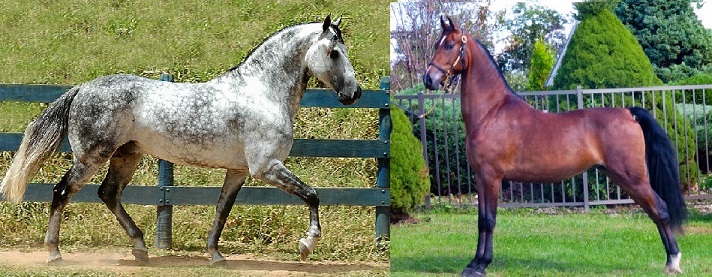
The Quarter Horse
So named because it was very good at Quarter Mile races. Being quite nimble, and with the ability to sprint, this breed was ideally suited to cattle herding. When trying to rope a cow, a horse that can “spin on a dime” and give chase, is a boon to any professional cowboy. No surprise that even today their numbers are in the millions, and their popularity is worldwide.
They originate from imported British Colonial and European bloodstock, coupled with relatively native breeds migrated from South America originally brought in from Spain. Some of these feral horses were further developed by Native American peoples such as Comanche and Nez Perce tribes
They are popular at eventing, show jumping, point to point sprinting, dressage, driving and rodeos not forgetting they are still pretty useful on cattle ranches performing the roles they have covered for centuries. Typically ranging from 14-16hh and 400-500kgs there are larger heavy muscled examples. So too there are pony versions from 12hh suited to the younger rider. Various colours available (examples are strawberry roan & palomino).

Appaloosa
Thought to have its origins in Mongolia, although when the Bering Land Bridge existed (10,000 years ago,) mammals could travel either way between North America and North East Europe. In more recent times (last 300-400 years) they were selectively bred by the Nez Perez tribe of Native Americans. Curious, intelligent and often stubborn they were bred for stamina and endurance, as well as looks. The Iris (coloured part of the eye) has a white ring or halo, believed to be unique to this breed. Can have areas of bald or light skin, if so ensure areas of shade exist to avoid sunburn. Typical size is 14-15hh, 400-500kgs, and patterns include leopard, blanket, snowflake or marble.
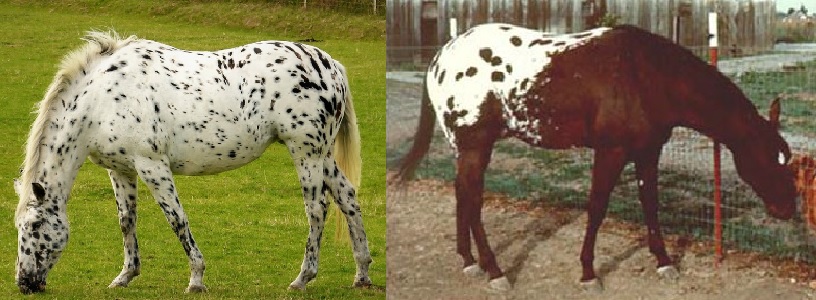
American Welara Pony
The breed registry was formed in 1981 to develop & promote this breed. The original bloodstock being Welsh and Arabian from the early 1900’s. Lady Wentworth crossed her Welsh pony mares with Arabian stallions, hence the name Wel-Ara. These British experimental crosses were not initially intended to be a distinct breed (in 1900) but some years later they were exported to the USA wher they gained some popularuty and in 1981 the American Welara Registry was formed, and set the standards for the future. Various characteristics came from using class A,B,C & D Welsh ponies (A being the smallest under 13hh, with section D at 15hh). Popular with children and adults in sporting events, both riding, jumping and driving. All colours except appaloosa are allowed. Not so popular in the Eastern States, where other breeds were more established, even so, today they are to be found all around the globe.
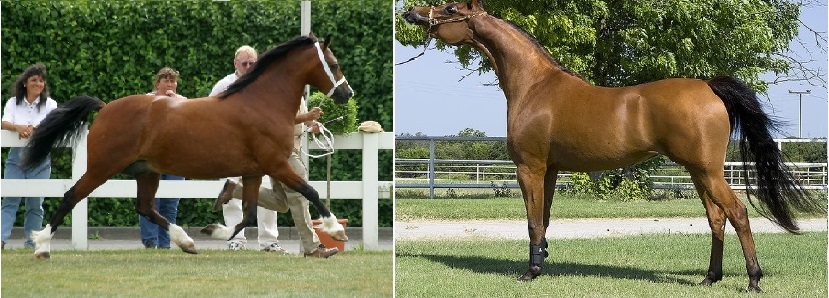
American Indian Pony
So many sizes and varieties, the Native American Indians bred horses for colour, size, riding, hunting, meat and trading. Some tribes like the Nimiipuu bred horses with a specific aesthetic, others bred horses for agility and speed. They originated from Spain and Portugal, and those which escaped captivity reproduced and migrated northwards to the plains of North America. These horses and ponies are the basis of the American Mustang, which were adopted and re-domesticated by native Americans. They were hunted for meat as well as being used to hunt Pronghorn (aka “Antelope”) or Buffalo, they were also a form of currency and were traded for goods or favour. At one time the US Government ordered the destruction of Indian horses to quell the peoples and seize their lands. These feral horses used to feed the native tribes so were wiped out in order to force their relocation. When the practice was halted, the remnants of those herds again reproduced and repopulated the plains, no longer populated by indigenous peoples.
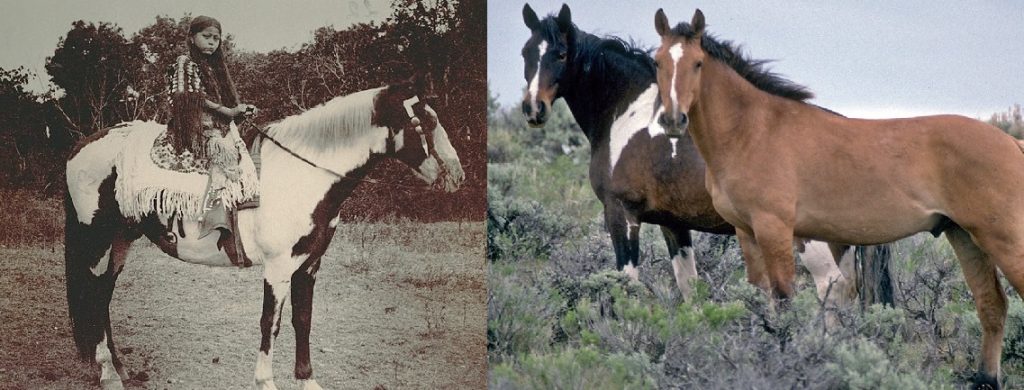
Nez Perce
The Nimiipuu tribe were famed horse breeders, but following conflict involving the US Government, US cavalry, enforced relocation and sequestration of land, the tribe (also known as Nez Perce, to early French Canadians) were forced into becoming farmers, with many of their lean, long backed horses killed or mares exchanged for the more compact quarter horses deemed more suited to agricultural use. Most of those exchanged horses were deemed untrainable by the US Army and were destroyed. In 1995 a breeding programme was initiated and finance by the US Government to re-establish the horse culture of the Nez Perce. An old line of Appaloosa (the Wallowa heard) has been cross bred with an ancient Asian breed (Akhal-Teke) to re-introduce the longer lean look of the original Appaloosa strain. Once again the objective is to develop an animal with the qualities of endurance and speed that enabled those ancient peoples to elude the Government enforcers for so long.
The colouring is targeted on a buckskin or palomino base with Appaloosa characteristics of leopard spots or a blanket over mottled skin. Also a long stride, gaited running walk, but only time will tell where it will lead. A height of 14-15.2hh is sought which is similar to the more moderns compact Appaloosas. The Akhal-Teke is a very rare breed, with fine, shiny, almost metallic coat. It is fine boned and has a life expectancy of only 20 years (see the elongated Akhal-Teke & Appaloosa, below)

